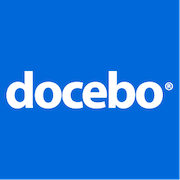Looking for the best eLearning authoring tool? Our comprehensive buyer's guide has everything you need to know to make an informed decision. Explore now!
Are you in the market for an eLearning authoring tool but feeling overwhelmed by the sheer number of options available? Don't worry, we've got you covered. In this guide, we will take you through the top eLearning authoring tools available to suit your every need, whether you are an experienced instructional designer or a beginner. Our in-depth analysis delves into the essential features, pricing, and usability of each tool, giving you a comprehensive understanding of what each has to offer. By the end of this guide, you will have all the information you need to make an informed decision and choose the perfect eLearning authoring tool for your business. So sit back, relax, and let's dive in.
What are eLearning authoring tools?
eLearning authoring tools (eLATs) are software applications used to create and design interactive online courses. They enable developers and instructional designers to design and develop a wide range of eLearning materials, from simple text documents to multimedia content such as images, audio, and video.
Common use cases for these tools include:
- Creating eLearning content: They allow businesses to create interactive online courses. Companies can use them to develop and design various types of eLearning materials such as online courses, simulations, webinars, and quizzes.
- Rapid development of eLearning content: They can also develop eLearning materials quickly; businesses can create online courses much faster than traditional classroom-based training. This rapid deployment helps organizations save time and money on training. According to Brandon Hall Group, a survey of 10,000 companies found that deploying an authoring software program can reduce training creation time by 20%.
- Customizing and personalizing content: With these systems, businesses can tailor the content for individual learners. Companies can customize learning resources to fit the individual needs of their employees, making the content more relevant, engaging, and effective.
- Integrating with learning management systems (LMS): Most eLearning authoring solutions are compatible with LMS, allowing organizations to manage and deliver their eLearning content easily.
These are the types of companies that use them:
- Large enterprises: Large-scale organizations use them to conduct employee training across the organization. The tools are used to train staff globally, and these tools help to better standardize training.
- Small and medium-sized enterprises: SMEs also use such solutions for employee training, but the scale is usually smaller than in large organizations. In SMEs, fewer people tend to be responsible for creating and developing eLearning content.
- Educational institutes: Educational institutes use them to create online courses and other learning materials for students that are easily accessible.
These eLearning apps have the ability to create custom and engaging content, in an efficient and cost-effective manner, are what make them so appealing to businesses and educational institutions alike. With an increasing emphasis on remote work, it's expected the eLearning authoring tool market will continue to grow.
What are the benefits of eLearning authoring software?
Keeping employees up to date with the latest information and skills is a critical component of success. One of the most effective ways to achieve this is through eLearning, which enables employees to learn at their own pace and on their own schedule. However, creating such courses can be an overwhelming and time-consuming task. A wide variety of L&D functions embrace a framework known as “70:20:10,” in which 70% of learning takes place on the job, 20% through interaction and collaboration, and 10% through formal-learning interventions such as classroom training and digital curricula. This is where eLearning authoring tools come in. These powerful software solutions make it easy for businesses to create engaging and effective eLearning courses without needing advanced technical skills or an extensive budget. Let's take a closer look at the benefits.
- Cost-effective: They are a cost-effective solution for businesses as they eliminate the need for expensive course development. Instead, businesses can create their own courses using the authoring tools at a fraction of the cost.
- Time-efficient: With these applications, businesses can create courses quickly and efficiently, without having to spend months in development. This means that businesses can get their employees trained and up to speed in a short amount of time.
- Customizable: eLearning authoring solutions offer a high degree of advanced customization, which means that businesses can tailor their courses to meet their specific needs and goals. They can easily add their branding, use their own company-specific examples, and create courses that address the specific skills and knowledge required for their industry.
- Interactive: Interactive elements such as quizzes, games, and simulations can be easily incorporated into eLearning courses using authoring tools. This makes the courses more engaging and interactive, keeping employees interested and motivated to learn.
- Consistency: eLearning authoring interfaces provide a standardized format for course creation, which ensures consistent delivery of training materials across the entire company. This helps to ensure that employees receive the same level of training and that all employees are up to date on the latest information.
10 key features of eLearning authoring apps
These have become the go-to solution for many organizations that seek to create engaging and compelling eLearning experiences. They provide a user-friendly and cost-effective way to develop online course materials. Here, we highlight some of their most common features that offer the most value to users:
1. User interface (UI):
They feature a well-designed UI that allows for easy navigation and an intuitive editing process.
2. Content templates:
They come with an additional feature of prebuilt content templates that can be customized to create a professional and cohesive look and feel for your eLearning materials.
3. Multi-platform and cross-device compatibility:
These tools ensure that the eLearning content you create can be accessed from any device, including smartphones, tablets, laptops, and desktop computers.
4. Collaboration tools:
Enables collaboration among multiple authors, editors, or stakeholders who can work together on the same project, simultaneously.
5. Multimedia integration:
These tools enable the integration of multimedia elements such as images, videos, audio clips, and animations, to transform course content into dynamic and interactive learning experiences.
6. Built-in assessment and feedback features:
These essential features allow experienced authors to create and embed assessments that help learners evaluate their progress and provide immediate feedback to the learner.
7. Social learning:
These tools are equipped with social learning capabilities and some extend API advanced capabilities too, making it easier for you to create engaging eLearning that promotes social interaction and fosters collaborative learning.
8. SCORM compliance:
These tools have SCORM (Shareable Content Object Reference Model) compliance, ensuring learners can track their progress and course completion status, giving way to course accreditation.
9. Localization and language support:
These tools are built to facilitate eLearning content translation to different languages or localization.
10. Automated authoring and publishing:
They can automate the authoring and publishing process and reduce manual labor, positively impacting project timelines and budget constraints.
The aforementioned impressive features make eLearning authoring systems a reliable package for efficient and effective eLearning content creation, and are worthy of a careful evaluation for organizations looking to create engaging educational experiences.
Top considerations of eLearning authoring platforms
- Businesses that want to create high-quality and engaging eLearning courses make eLATs a priority. With a wide array of options on the market, it can be difficult to make a perfect choice. Here are some factors that businesses should consider when shopping for these technologies.
- One of the most important considerations is ease of use. A user-friendly interface enables developers to create content more efficiently. Businesses should consider the learning curve associated with each eLAT and how it aligns with their teams' capabilities and expertise.
- Another crucial consideration is compatibility with their learning management system (LMS). The eLAT should be compatible with the company's existing infrastructure to avoid potential integration issues. Businesses should also consider how easy it is to publish eLearning content online and the different output options.
- Pricing is another important factor to consider as eLATs can vary greatly in price. Businesses must understand the cost-benefit ratio with their proposed LMS, the capacity of the tool they are choosing, and the number of users who will have access to the tool.
- The extent of functionality is also critical. Businesses should determine their requirements and consider the level of interactivity needed, design features such as transitions, character animations, and multimedia options. Some eLATs also offer advanced features such as gamification and branching, which may be beneficial for businesses depending on their eLearning goals.
- Lastly, customer support and service are essential when selecting such programs. Businesses should consider available support options for getting help with the technical and creative aspects of designing eLearning. Some providers also offer training and customer success managers to ensure businesses are getting optimal use of their chosen platform.
Industry trends for eLearning authoring apps
In the world of eLearning, staying up-to-date with the latest trends is crucial to ensure that organizations remain competitive and successful. As we head further into 2024 and beyond, here are some of the biggest trends to keep an eye on.
Trend #1
Firstly, cloud-based authoring tools will continue to gain popularity, as they provide a more scalable and cost-effective solution for businesses.
Trend #2
Secondly, personalized learning experiences will become even more prevalent, with authoring systems offering more customization options to meet individual needs.
Trend #3
Thirdly, interactive and gamified content will become increasingly important, as organizations look to engage learners and make training fun. Fourthly, authoring tools will become more intuitive and user-friendly, with a focus on drag-and-drop interfaces and a variety of templates.
Trend #4
Finally, mobile-first design will continue to grow in importance, as learners increasingly access training on their smartphones and tablets.
Conclusion
To conclude the rising popularity of eLearning authoring tools in the business world comes as no surprise, given their numerous benefits. These platforms empower organizations to create engaging, effective, and competitive eLearning content that meets the diverse needs of modern learners. By staying abreast of the latest trends, businesses can leverage new technologies and methodologies to enhance their training programs continuously. This proactive approach ensures that eLearning content remains dynamic, relevant, and impactful in an ever-changing landscape. Ultimately, embracing these tools enables organizations to adapt to evolving learning preferences, drive learner engagement, and achieve their training objectives more efficiently in today's digital age.






